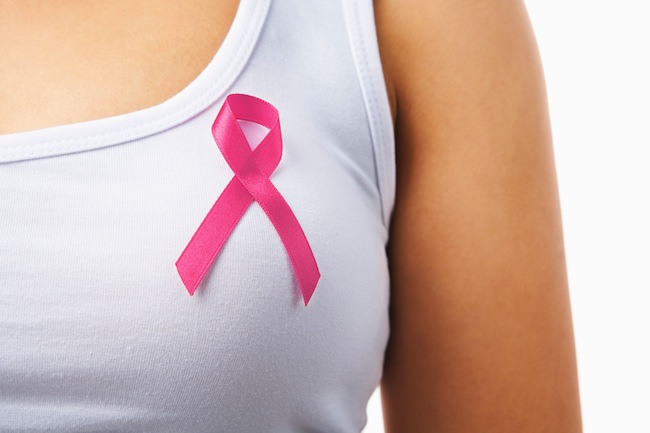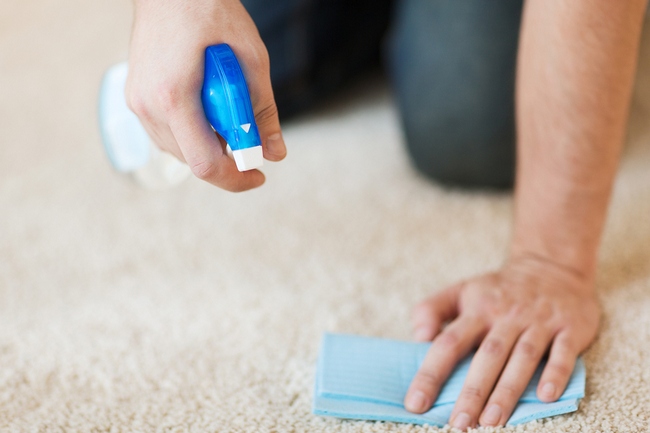- Make It Yourself Lavender Heart-Shaped Bath Bombs!
- 20 Things You Never Knew About “Down There”
- 12 Best Foods For Those Suffering From Arthritis Pain
- 12 Personal Hygiene Mistakes Almost Everyone Makes (Mom Never Told You About #4!)
- 15 Medicinal Plants And Herbs From The Cherokee People
- 12 Mind-Blowing Benefits Of Drinking Coconut Water During Pregnancy
- 12 Outstanding Winter Foods That Won’t Fatten You Up Like A Christmas Turkey
Top 8 Things that Increase Your Risk of Breast Cancer

Photo credit: bigstock
It’s possibly one of the worst things a woman can hear at the doctor’s office, a diagnosis of breast cancer. Everyone knows someone who has gone through the procedure of surgery, despair, chemotherapy, and radiation. The lucky ones live their lives disfigured others are not that lucky.
One in every 8 women will develop breast cancer at some point in her lifetime, according to Breastcancer.org. About 40,000 women will die from this disease each and every year.
When you see odds like that, you want to be sure to do everything in your power to avoid becoming the next statistic. The good news is that there are practical measures you can take to lower your risk of developing breast cancer.
Of course sometimes breast cancer is due to a genetic disposition. However, that’s less than 10 percent of cases. That means that 90 percent of cases must be triggered by some other factor(s).
Many doctors will tell you that most cancers are preventable through proper diet and exercise but there’s another source that breast cancer comes from and that’s exposure to toxins.
The removal of toxins is extremely important. Doing this means you will need to take careful inventory of every single household and personal care product you have in your house, including your furniture, and every single toxic item you come into contact with every single day. Any doctor worth their salt will tell you that an overexposure to toxins plays a very important part in the development of cancer. Numerous studies shed light on some of the worst offenders.
The National Institutes of Health (NIH) recently published a study that showed that it is possible to greatly reduce your risk of breast cancer by avoiding some common chemicals. This study was published in the journal Environmental Health Perspectives.
This study found that animal tests were good predictors for human breast cancer studies and that this new report could dramatically help the prevention of breast cancer. Every single woman on this planet has been exposed to chemicals that greatly increase her risk of breast cancer. The sad part of this issue is that the link between toxic exposure and breast cancer development has been largely ignored.
Previous studies identified as many as 216 chemicals that increase tumors of the mammary glands in rodent studies. This study narrows the focus to 102 chemicals that most women are exposed to regularly either through air pollution, medication, food, or consumer products.
The following 8 chemicals were listed as high priority to avoid breast cancer.
Continue to Page 2

Photo credit: bigstock
1. Nitro-PAHs
These chemicals are mainly found in diesel exhaust, air pollution, tobacco smoke, and charred foods. The best way to avoid these toxins are to not smoke, not inhale second hand smoke, avoid highly polluted areas as much as possible, and never eat meat ( or other cooked items) that have been “blackened” or charred. Eating charred meat has also been shown to lead to stomach cancer.
2. Flame Retardants
These chemicals are everywhere, not just in children’s sleepwear. You will find flame retardants in polyester, resins, rigid polyurethane foam, and plastic polymers. It’s also in your diet in the way of acrylamides. These chemicals are generally found in French fries, most fried foods cooked at higher temperatures, tobacco smoke, and many of the polyacrylamide gels that are commonly found in diapers.
SEE ALSO: Avoid These 17 Chemicals to Lower your Risk of Breast Cancer
3. Ochratoxin
Sometimes this occurs naturally in contaminated nuts, grains, and pork but more often than not, it’s in something we call styrene. Foods that have come into contact with polystyrene, building materials, consumer products such as polystyrene plates and cups, carpets, adhesives, home maintenance products, hobby and craft supplies.
4. Halogenated Organic Solvents
You will find these in hair spray propellants, dry cleaning agents, food processing, soil fumigants, gas additives, as well as spot removers and it can be in some paints. This list also includes ethylene (ETO) and propylene oxide (PO). ETO is a type of gas used to sterilize things such as clothing, food, spices, musical instruments and medical equipment. You will also find it in cigarette smoke and exhaust from cars. PO is also a gas used to sterilize and fumigate. It’s often found in paint and automotive products.
Continue to Page 3
5. Butadiene
This is in cigarette smoke, the fumes from gasoline, and car exhaust. It’s also found in emissions from industrial factories.
6. Aromatic Amines
This is also in gasoline fumes (which you often smell when you are riding in a car or pumping gas), tobacco smoke, paints, sealers, finishing products, engine fuels, oils, and adhesive removers. This is also present in many pesticides, dyes, and in polyurethane products.
7. Endogenous and Pharmaceutical Hormones
This list includes all endocrine disrupting chemicals such as estrogens (birth control pills) progesterone, DES, and all other hormones. Pharmaceuticals that state they are non-hormonal still have hormonal activity.
8. PFO’s and MX
These go by hundreds of names and are often the by-product of drinking water disinfection. PFOA’s are non-stick cookware, stain resistant coating on rugs, clothes, rugs, and furniture. You will also find this in firefighting applications, lubricants, paints, adhesives, and most cosmetics. Read more how to use lemons instead of beauty products.
Continue to Page 4

Photo credit: bigstock
Although it is very difficult to single out any particular group as being the worst offender, fire retardants might be the worst but only because they found in every home in America. Fire retardants can be found in everything, even the very mattress you sleep on every night. They are in your sofa, your chair, the carpet in your home, almost everything made of fabric has flame retardants in the material.
It’s been estimated that 90 percent of all people in America have these flame retardant chemicals in their bodies and numerous studies show they are connected to human health risks including birth defects, lower IQ scores, infertility, behavior problems in children, as well as several types of cancer, including testicular and breast cancer.
DDT and PCB’s, well-known carcinogens, are in the same class of chemical that flame retardants belong to. These types of chemicals also react with other toxins, should they burn, to produce cancer causing dioxins.
It’s amazing that another type of flame retardant, that was called TDCPP, was removed from children’s pajamas in the early 1970’s due to concerns that it might cause cancer, but it’s now added to sofas and cushions all over the US. Not OK for your children to sleep in, but OK for them to sit on. Your mattress is also made with flame retardant material. If you can afford to do so, ditch that toxic mattress and buy one that’s made of 100 percent wool or Kevlar, both of which are naturally flame retardant, no added toxins necessary!
Cosmetics may make us look and feel better ( Ok, even smell better), but many of the chemicals in your cosmetics are known carcinogens while others are known as hormone disruptors that can affect how estrogen works in your body. Estrogen can actually make hormone receptor positive breast cancer. These chemicals can encourage cancer cells to grow. Limit your exposure to these types of chemicals, such as triclosan, as much as possible.
Also be on the look- out for parabens in cosmetics and antiperspirants, as well as many sun screens. Many studies show that parabens have estrogenic activity in research involving human breast cancer cells. Research done in 2012 showed that they found one, or sometimes more than one, type of paraben esters in 99 percent of the 160 tissue samples that were taken from 40 mastectomies. This consistent presence of parabens in cancerous tissue suggests that parabens, whether they are in your cosmetics, lotions, or antiperspirants, might increase the risk of developing breast cancer.
Seek out organic items, whether it is clothing, bed linens, laundry soap, household cleaners, or cosmetics. Every little bit helps reduce your exposure to cancer causing toxins.
Sources:
Environ Health Perspect; DOI:10.1289/ehp.1307455
Chicago Tribune, Playing with Fire
Journal of Applied Toxicology January 12, 2012: 32(3); 219-232
Journal of the National Cancer Institute (2005) 97 (1): 1.
American Journal of Clinical Nutrition December 28, 2011
Clinical Cancer Research October 15, 2005 11; 7490
Anticancer Research March 2014: 34(3); 1163-1166
UC San Diego Health System Press Release March 6, 2014
American Live Wire March 7, 2014
UC San Diego Health System Press Release March 6, 2014
Anticancer Research February 2011: 31(2); 607-611
UC San Diego Health System Press Release March 6, 2014
U.S. News & World Report August 30, 2010
(By the way, if you’re enjoying this article, you may want to subscribe to the Naturalon’s free newsletter; get breaking news alerts on GMO’s, fluoride, superfoods, natural cures and more… You privacy is protected. Unsubscribe at any time.)

































